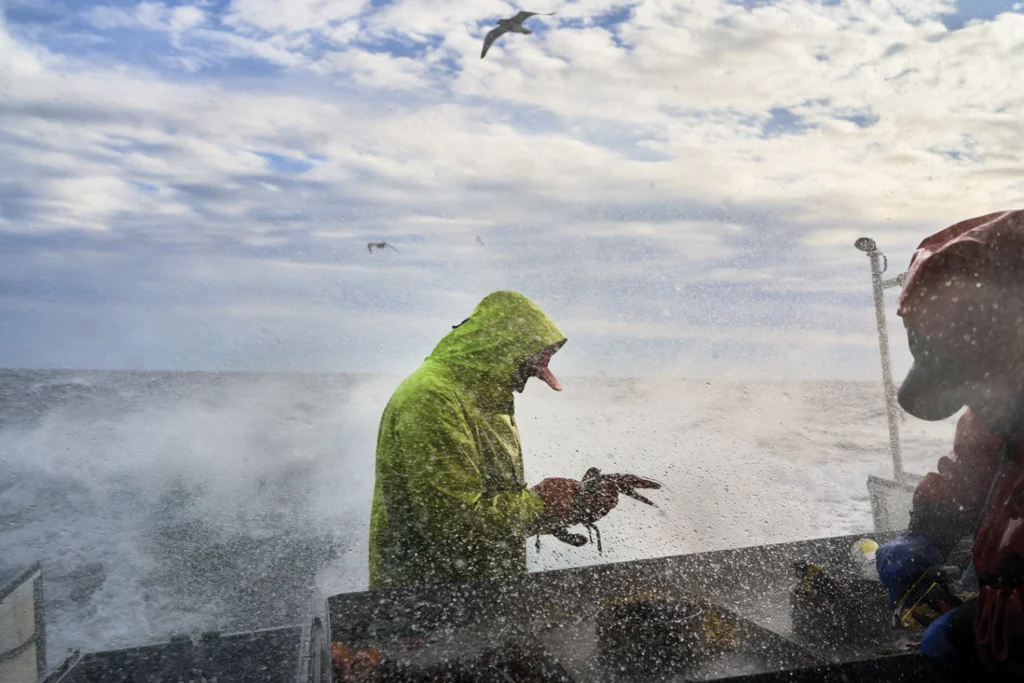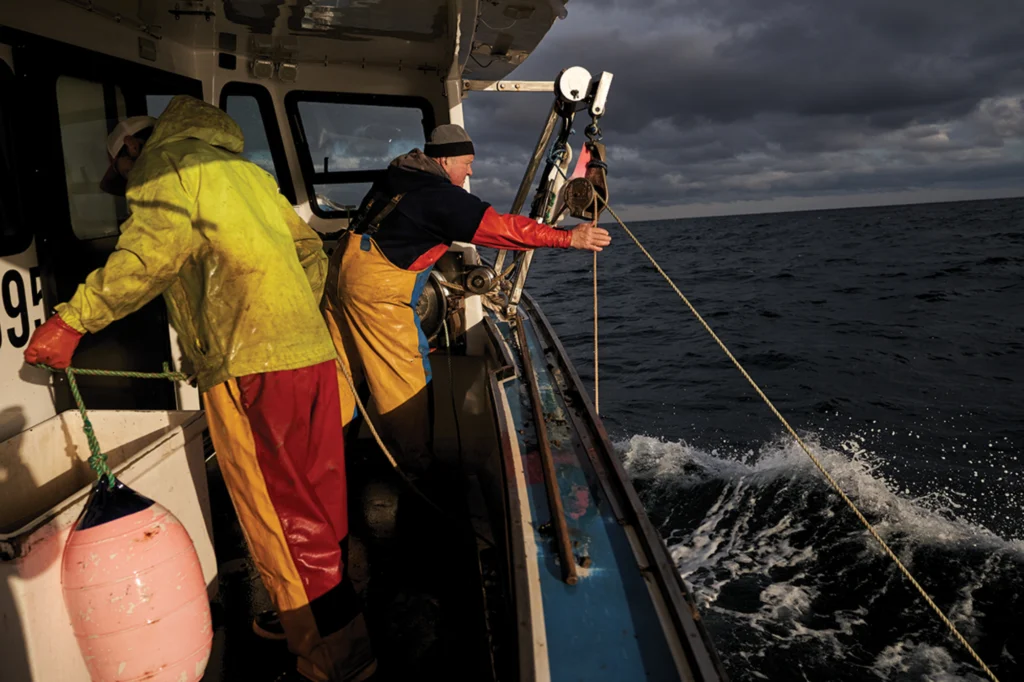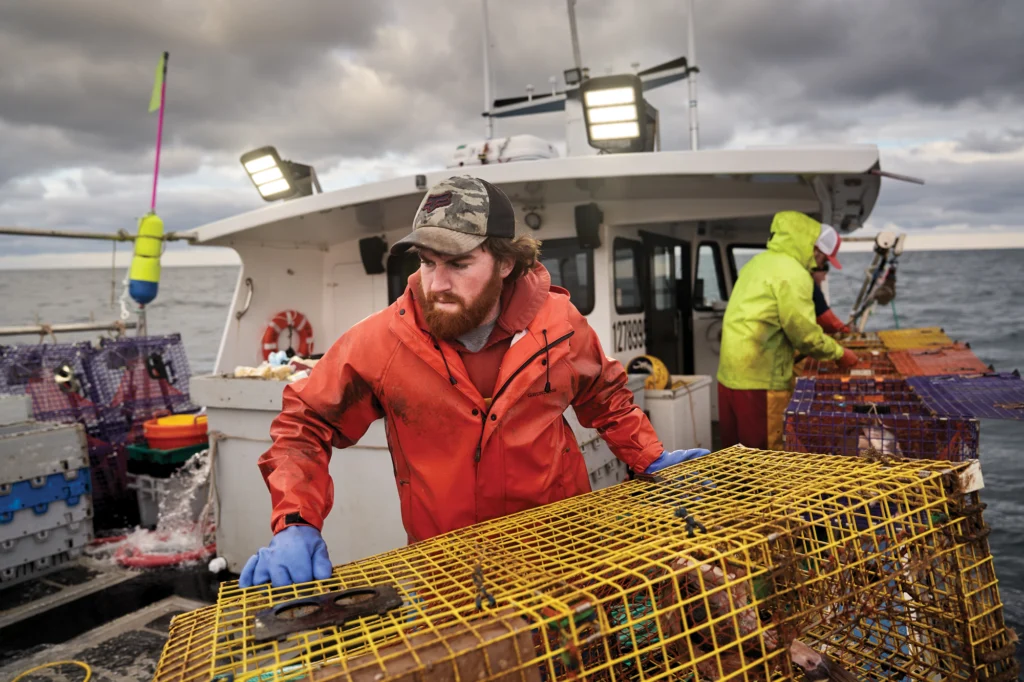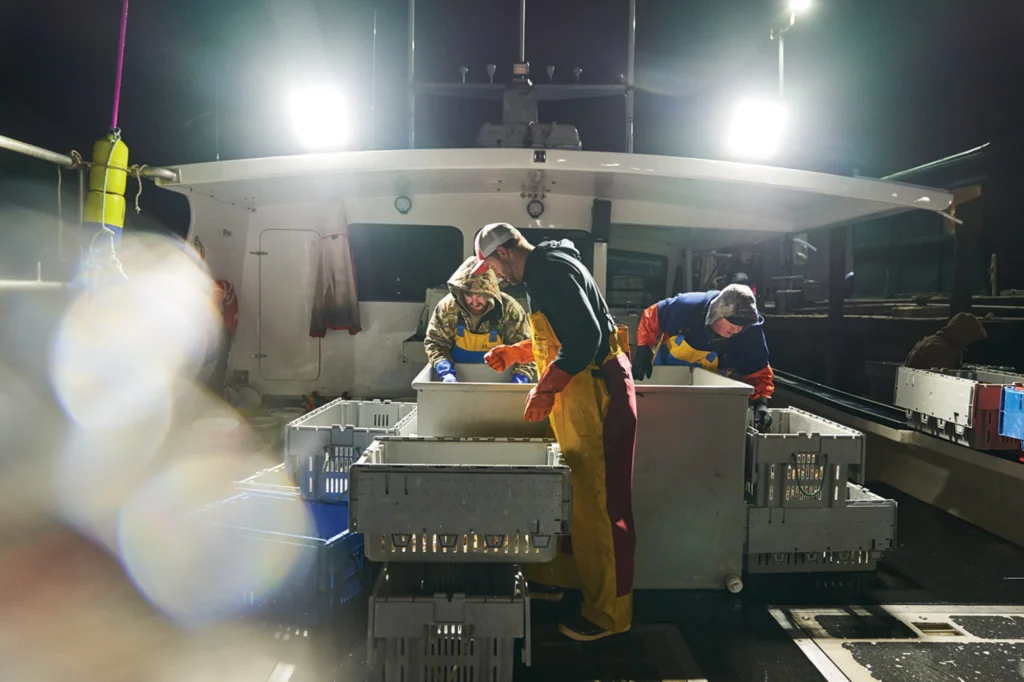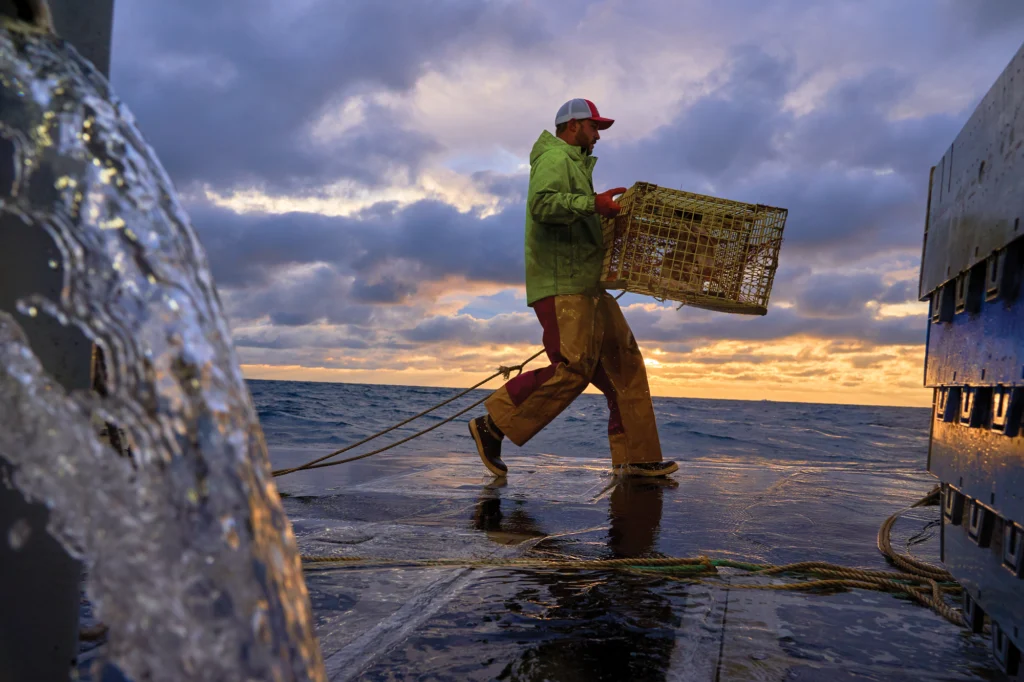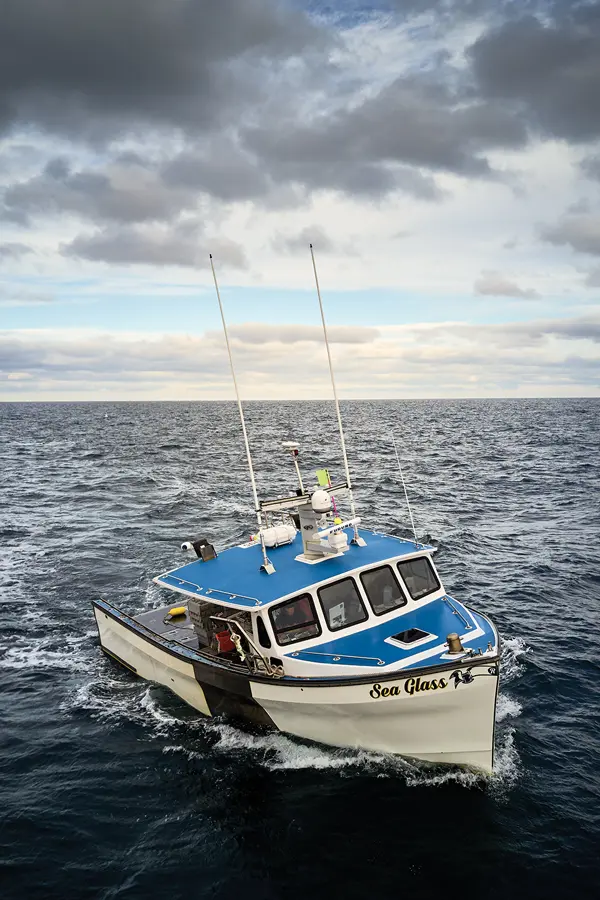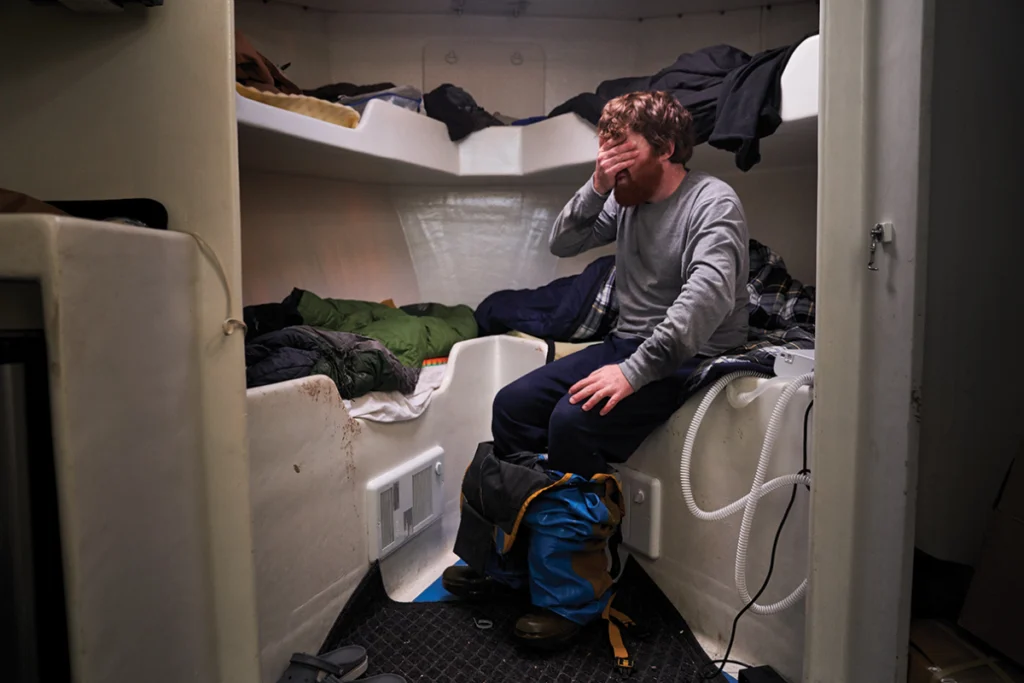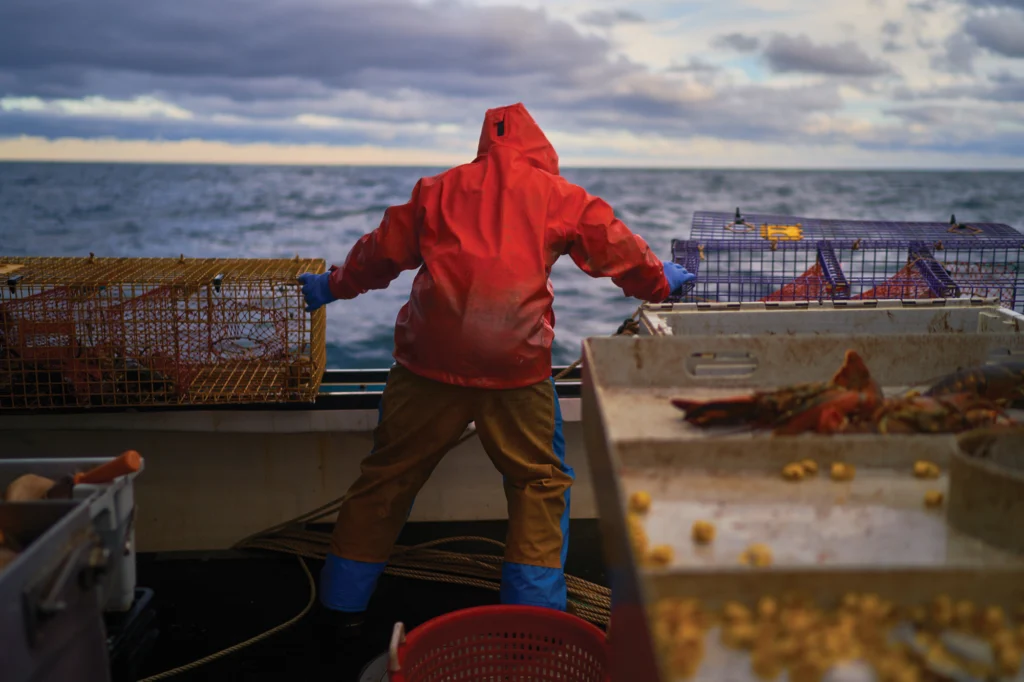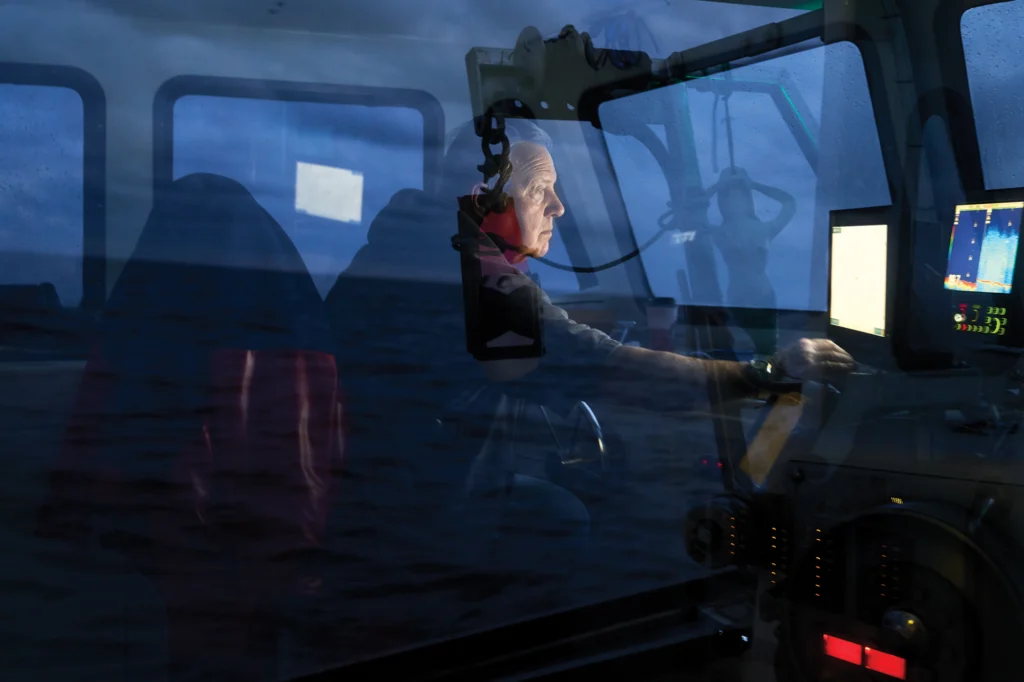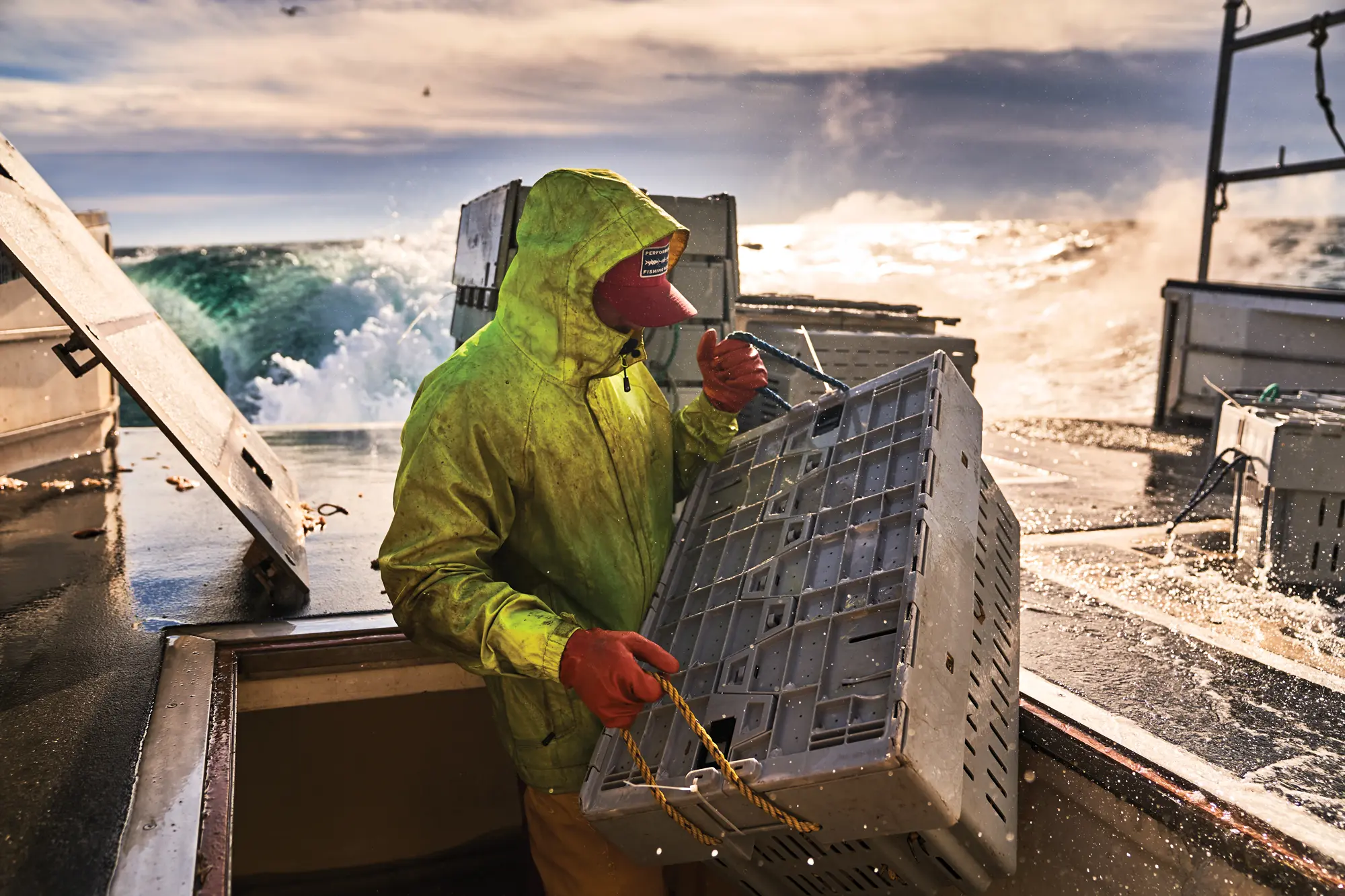Photos by Gabe Souza
From our March 2019 issue
In the pre-dawn of a winter Sunday, as most of Maine sleeps, 68-year-old Richie Walker starts the motor on Sea Glass, his 45-foot lobsterboat. A cup of gas station coffee in one hand, the throttle in the other, he eases from the dock and motors past the Rockland Breakwater.
“I don’t get much sleep when I’m out here,” he says, his breath visible in the cold of the cabin. “It’s mostly just fishing.”
It’s the start of a 20-hour day for Walker and his crew, as they head some 45 miles offshore — a four-hour run — to where Maine’s lobsters typically migrate in the winter, scuttling at depths of up to 600 feet.
Just a fraction of Maine’s lobstermen fish offshore. For starters, it takes a bigger (and more expensive) boat than those composing most of Maine’s fleet, both to handle rougher waters and to accommodate crew during the multi-day trips that make long treks to the fishing grounds profitable. Navigational equipment is expensive, as are the necessary federal permits. And the work is demanding.
“There’s good money to be had,” says Walker, who has fished offshore for more than a decade, “but only if you work all the time chasing them.”
That money is starting to lure more lobstermen offshore. And if a warming Gulf of Maine pushes lobster populations into deeper waters, as many scientists predict, much of Maine lobstering in another few decades may resemble the work that Walker is doing today, out where there is no cell service, no island stopovers, no land in sight — just three men, a boat, and the relentless shock of freezing sea spray as they race to haul as many traps as they can.
